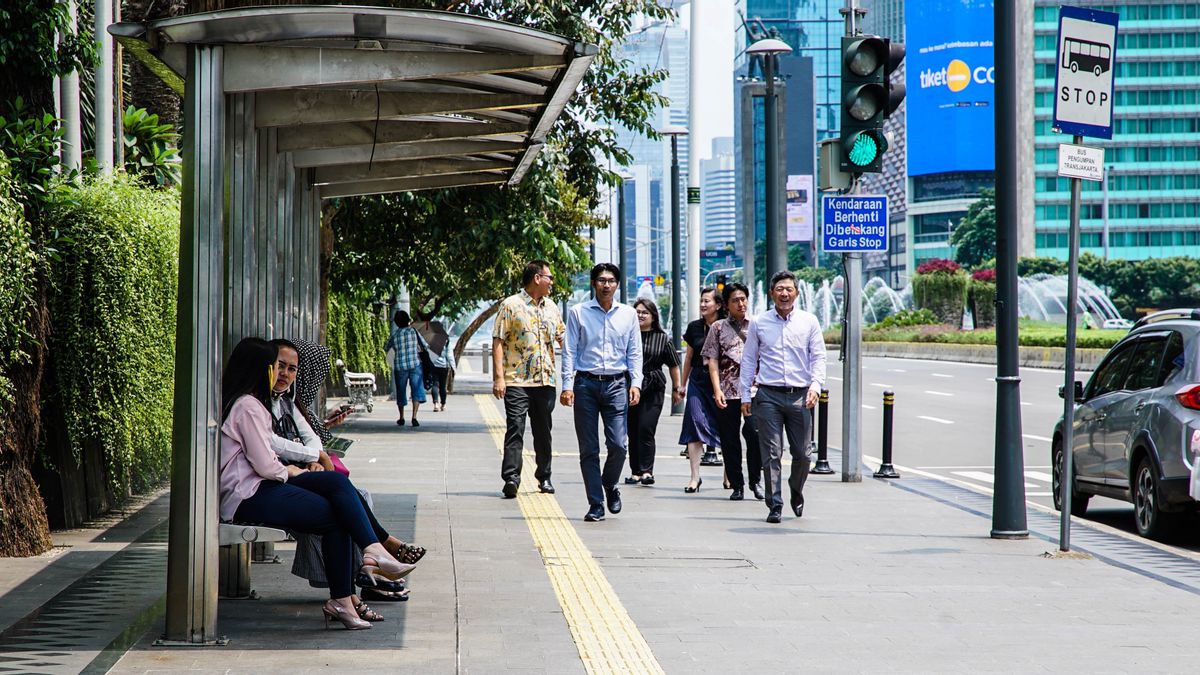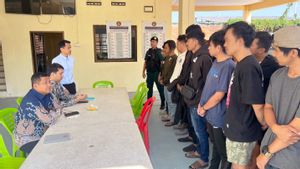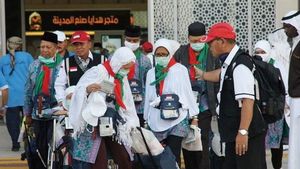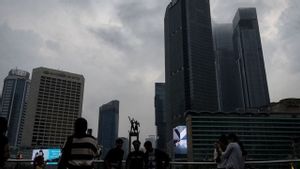JAKARTA - The coronavirus pandemic or COVID-19, which is currently experiencing an escalation in Indonesia, has the potential to not only cause a contraction in economic growth, but also an increase in the number of unemployed on a large scale.
In recent weeks, a wave of layoffs has spread in a number of sectors, from the manufacturing sector to the service sector, such as tourism, transportation, trade, construction, and others. Not only that, there are also some companies that are currently only able to pay half of their employees' salaries.
The Center of Reform on Economics (CORE) estimates that if this pandemic lasts longer, it will potentially cause a very high spike in the number of unemployed this year.
CORE economist Akhmad Akbar Susamto said, the increase in the number of open unemployment in the second quarter of 2020 was in three scenarios. The potential additional number of open unemployment nationally reaches 4.25 million people with the mild scenario, 6.68 million people with the moderate scenario, and even up to 9.35 million people with the severe scenario.
"The national open unemployment rate in the second quarter of 2020 is estimated to reach 8.2 percent in the light scenario, 9.79 percent in the moderate scenario and 11.47 percent in the heavy scenario," he said, through a written statement received by VOI, in Jakarta, Wednesday. , April 15th.
According to Akhmad, the increase in the number of open unemployment occurred mainly in Java, reaching 3.4 million people in the mild scenario, 5.06 million people in the moderate scenario and 6.94 million people in the heavy scenario.
The significant increase in the number of open unemployment is not only caused by a slowdown in the rate of economic growth which according to Indonesia's CORE projection will range from minus 2.00 percent to 2.00 percent in 2020. However, it is also caused by changes in people's behavior related to the COVID-19 pandemic, social restriction policies, both on a small scale and a large scale.
Akhmad said that the calculation of the increase in the number of open unemployment was based on a number of assumptions. Among them, the COVID-19 pandemic situation will be worse in May 2020 than in April 2020. Second, the impact of the COVID-19 pandemic will be different for business fields, employment status, and regions, both in terms of provincial locations and city and village locations.
According to Akhmad, the business fields that are assumed to experience the worst impact are the provision of accommodation and food and drink, transportation and warehousing and trade, both wholesale and retail trade. On the other hand, the business fields that are assumed to experience the least impact are health services and social activities and government administration services, defense, and compulsory social security.
Then, he continued, the employment status that is assumed to be the worst affected are casual workers or freelancers, self-employed, generally on a micro scale, self-employed with the help of temporary or unpaid laborers, and family workers or unpaid workers.
Viewed from the regional side, said Akhmad, it was assumed that DKI Jakarta would experience the worst impact, followed by West Java and other provinces on the island of Java. It is assumed that the impact of the COVID-19 pandemic will be greater in urban areas than in rural areas.
Akhmad explained that the light scenario was built with the assumption that the spread of COVID-19 would become more widespread in May 2020, but not to deteriorate so that the PSBB policy was only applied in certain areas on the island of Java and one or two cities outside Java.
"The scenario is being developed with the assumption that the spread of COVID-19 is even wider and that the PSBB policy is enforced more widely in many areas on the island of Java and several cities outside Java," he said.
Meanwhile, the tough scenario is built with the assumption that the spread of COVID-19 is unstoppable and that the PSBB policy is widely enforced both on the island of Java and outside Java, with very strict standards.
Akhmad said, in August 2019, the number of open unemployed was recorded at 7.05 million people or 5.28 percent of the total workforce. This does not include the underemployed number 8.14 million, and part-time workers 28.41 million people.
"Apart from layoffs in the formal sector, the impact of the COVID-19 pandemic on the loss of livelihoods in the informal sector also needs to be more vigilant," he said.
This is because, said Akhmad, the economic resilience of workers in the informal sector is relatively fragile, especially those who depend on daily income, mobility of people, and the activities of people working in the formal sector.
Moreover, the number of workers in the informal sector in Indonesia is greater than that of the formal sector, reaching 71.7 million people or 56.7 percent of the total workforce. The majority of them worked in micro-scale businesses 89 percent in 2018.
The English, Chinese, Japanese, Arabic, and French versions are automatically generated by the AI. So there may still be inaccuracies in translating, please always see Indonesian as our main language. (system supported by DigitalSiber.id)













